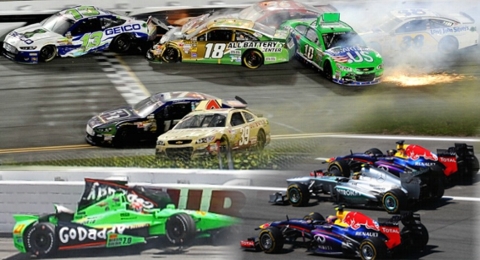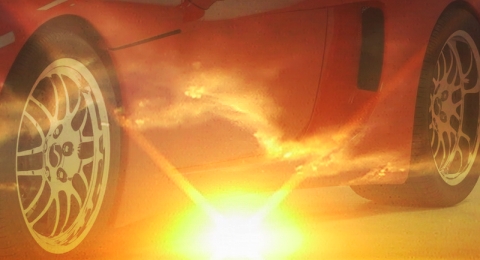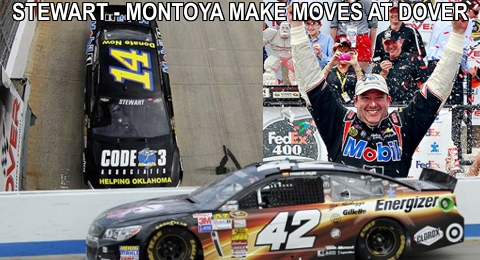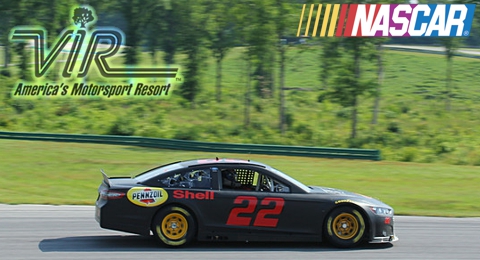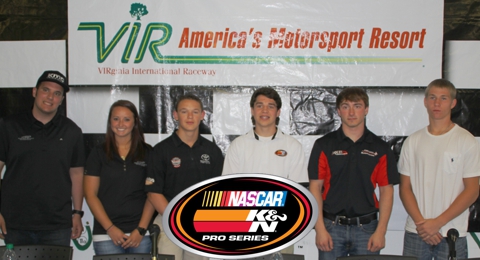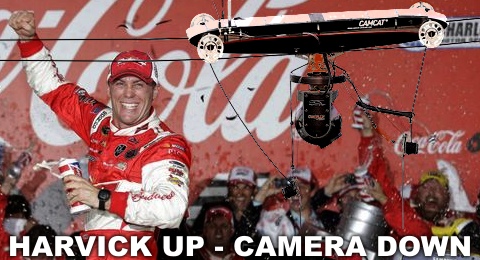It’s a bit like taking a man who grew up in the city and cutting him loose out in the forest. He is out of place with no corner market to grab a latte and a muffin…
NASCAR races in a controlled environment. Essentially, it is an oval in a bowl surrounded by a cage. Take those same drivers and cars and drop them in an open field surrounded by forests and birds and squirrels and they are as out of place as the man with no latte…
They are still the same cars. Fast, loud, powerful, but out of their element. There is no wall to contain them. The rhythm of accelerate, brake, turn left is broken up into segments separated by blasphemous right-handed turns, trees, and a panoramic view that can reach for miles as opposed to five stories of grandstands.
It is the scenario when you take NASCAR race cars and put them on a road course such as that at Virginia International Raceway. The actual configuration of the driving surface is similar enough to scheduled courses at Sonoma and Watkins Glen to make it beneficial for teams to test here. However, the setting is unlike the sanctioned tracks. Sonoma is cleared away much more and Watkins Glen is surrounded by farming. VIR is set in open forests with rolling hills and a view that can reach the next county or even the next state.
Road courses do not have retaining walls hugging the pavement. They do not have giant, towering fences. The racing surface is more narrow. They are not flat with the only rise being the banking in left turn after left turn. Road courses rise and fall with the natural terrain through left and right turns with the only containment marked with rounded curbs.
NASCAR teams test at Virginia International Raceway for the similarities of driving the course. The suspension and tire setups for the cars and the technique of getting around fast for the drivers all come in to play. These courses are essentially designed for smaller and lighter sports cars which come from the manufacturer built for handling. NASCAR brings cars much heavier and are based on family sedans built for groceries, soccer shuttles and a comfortable ride to work.
The course at Virginia International Raceway is similar enough to allow teams to gather useful data for racing at sanctioned tracks. It is also much closer to teams’ bases of operations to make practicing cost effective. It is also legal under NASCAR rules concerning practicing. They are limited as to practice outside of schedules on sanctioned tracks.
Teams go to VIR to practice and gather data. The picturesque views are an added bonus. Teams and drivers may not have the time to notice the countryside.
But fans do…
Go racing at VIR. NASCAR testing has become an annual event and is open for fans to watch. They are not “racing” but you do see them driving without your view being restrained by a fence 30 feet high, buildings and haulers in the infield and some nut wearing beer cans on his head.
Some of the cars are grey. You see them make right-handed turns. You see trees. You can walk around as there is no assigned seating.
This is but one example. Go see real racing at VIR. American Le Mans, as an example. Sports cars of every variety racing fender to fender among the scenery of rolling hills.
NASCAR testing has been a novelty. Now, however, Virginia International Raceway is set to host a NASCAR sanctioned series for racing. The K&N Pro Series is racing in August. Stock cars will be rumbling and racing on the historic course at VIR. (See more info here)
It is getting more and more interesting to go racing at VIR! Visit online for the full schedule.
